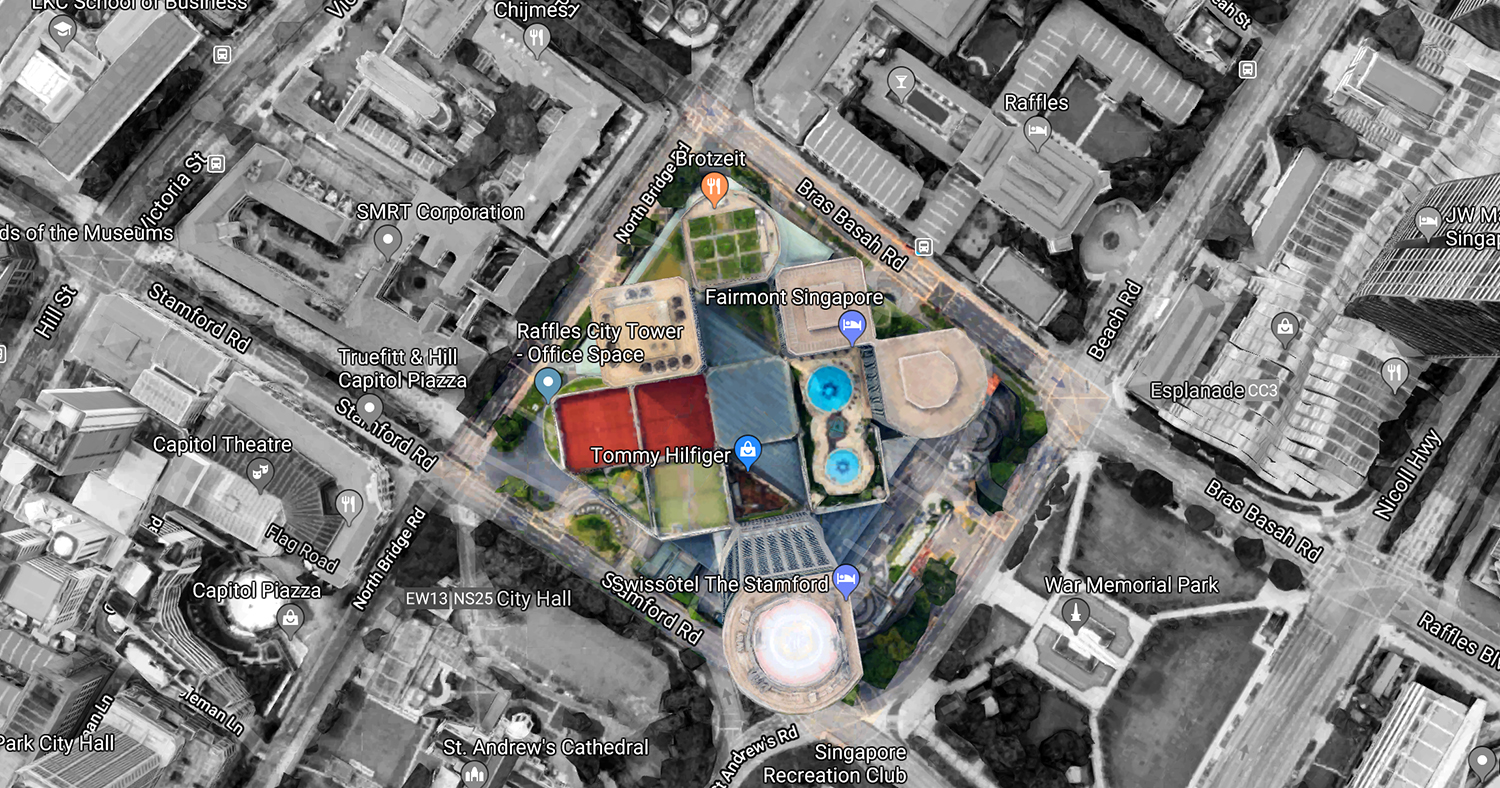Today, Raffles City looks quite at home in Singapore’s metropolitan city centre.
The complex was designed to be “a city within a city” - comprising two hotels, a convention centre, a shopping centre, and an office tower.
You might not know this, but Raffles City was conceptualised, financed, and managed by the Development Bank of Singapore, now known as DBS Bank.
To say that the project was ambitious is an understatement.
Raffles City was the single largest commercial development built at that time. One of the hotel towers, then known as the Westin Stamford, was the tallest in the world, standing at 73 storeys high. The Raffles City convention centre had the honour of being the biggest convention centre in Singapore.
Nothing like it had ever been done.
DBS nonetheless went ahead with the financing. It cost a total of $1.3 billion.
In total, the complex took 17 years to plan and construct. With such a long gestation period, every effort was made to avoid additional delays. Instead of using a pile foundation, the contractor, Ssangyong Construction, used mat foundations - essentially reinforced concrete slabs that sit below the main structures of the complex, i.e. the office tower and two hotels.
Since the hotels and office tower have different loads, the contractor had to ensure that each mat was calibrated accordingly. This saved them several months of construction time.
When it opened in 1986, Raffles City was one of the earliest projects that helped revitalise the Marina Centre and Marina Bay areas.
Which was why when it was first constructed, Raffles City looked a little out of place. Compared to the quaint Raffles Hotel nearby and idyllic Saint Andrew’s Cathedral next door, Raffles City stuck out like a sore thumb with its towering aluminum and glass facade.
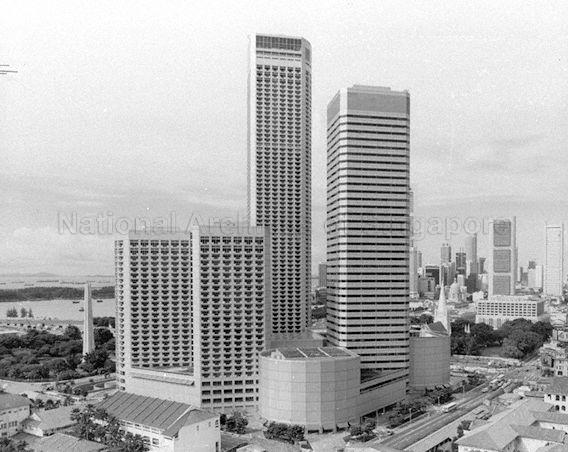 Raffles City in 1986. Via NAS.
Raffles City in 1986. Via NAS.
Some people described it as “modernistic and overpowering”. The Straits Times derided its design as “obtrusive and disproportionate” despite it being the work of renowned American Chinese architect I. M. Pei.
Some even thought of the high rise towers as glorified HDB blocks.
 Via NewspaperSG.
Via NewspaperSG.
Here are a couple of other facts about the design of Raffles City you might not have known:
The Westin Stamford (the tallest of the four towers) was positioned next to the Padang. When you look at the hotel tower next to the open field, the tower doesn’t appear to be so overpowering.
 Raffles City in 1986. Via NAS.
Raffles City in 1986. Via NAS.
If you also notice, Raffles City is angled 45 degrees so that the walls don’t run parallel to the streets. This ensures that visitors are not greeted by a wall when approaching from the street.
Additionally, you might have also noticed that the four corners of the complex which are directly in front of four road junctions have been softened by rounded corners.
If you were to walk around the Swissotel Stamford tower, it would appear to change from cylindrical to rectangular.
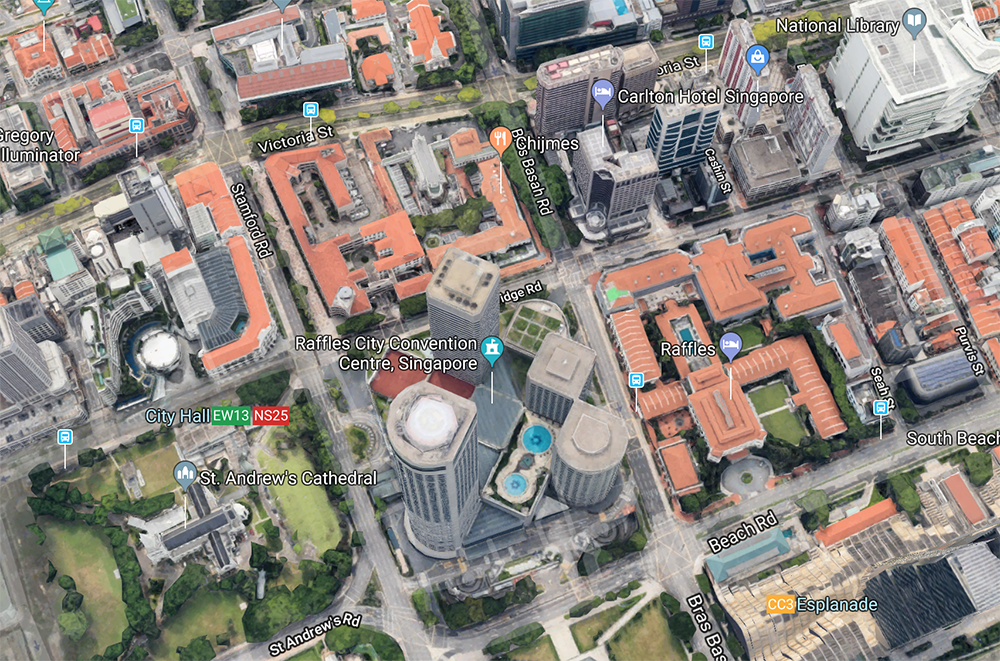 Via Google Maps.
Via Google Maps.
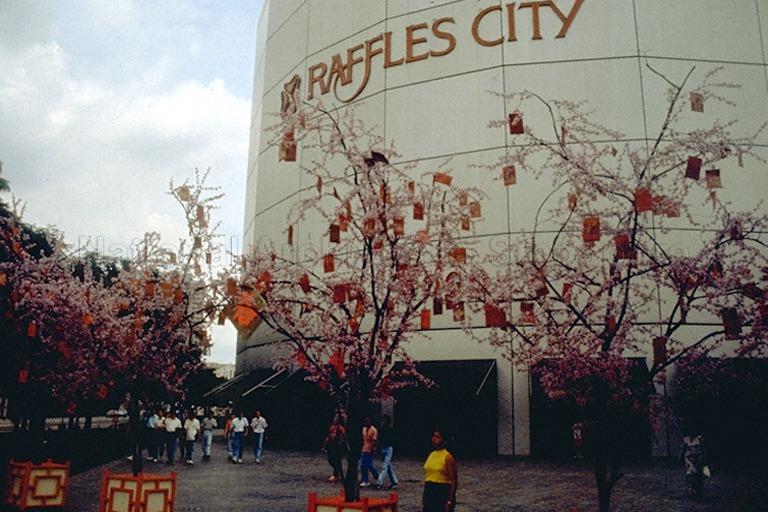 Raffles City in 1986. Note the DBS logo. Via NAS.
Raffles City in 1986. Note the DBS logo. Via NAS.
The opening was a success. Raffles City managed to score popular Japanese department chain Sogo as its anchor tenant, which drew the crowds. One year after its opening, the City Hall MRT station opened, resulting in an increase in visitorship to Raffles City.
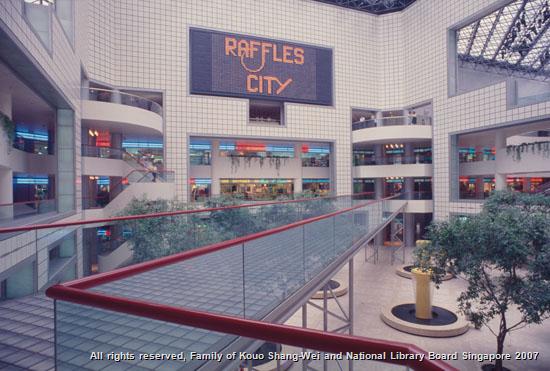 Raffles City. Via NLB.
Raffles City. Via NLB.
Since then, the Marina area has been transformed by many new and bold developments, arguably inspired by the “obtrusive” complex that was ahead of its time.
So the next time you’re out and about in the city, take a moment to remember Raffles City, which paved the way for the beautiful, metropolitan city centre that we see today.
DBS celebrates 50th anniversary
This and other interesting stories highlight how DBS has constantly evolved to redefine itself over the last 50 years. If you're interested, you can also find a series of illuminating first-person accounts of the DBS journey, curated in an ebook titled The 50 years here.
This sponsored article by DBS allows our writers to go out jalan jalan see fancy buildings.
Top image adapted via Google Maps.
If you like what you read, follow us on Facebook, Instagram, Twitter and Telegram to get the latest updates.
